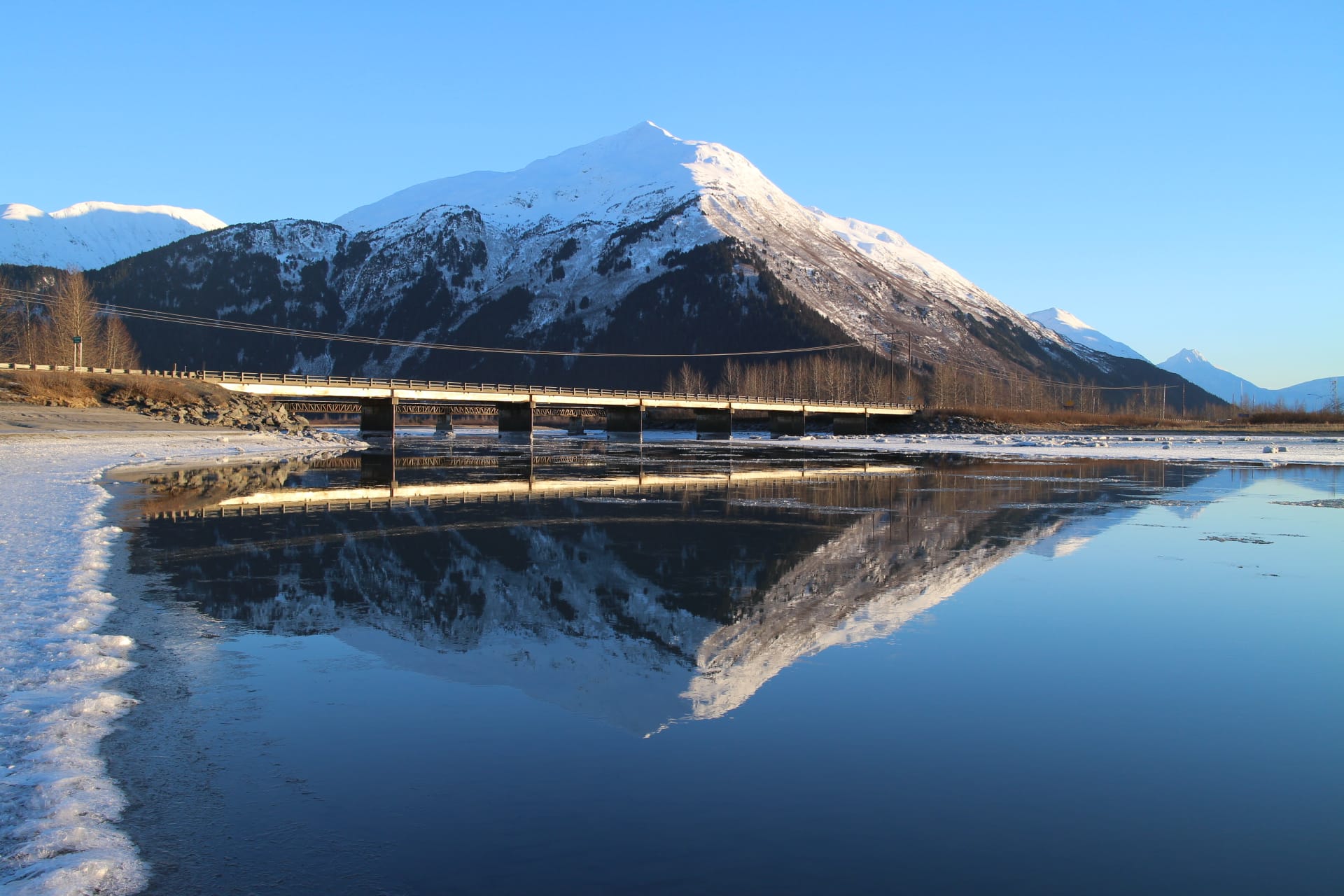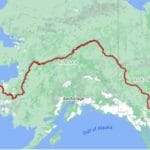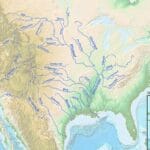Get ready for an epic journey down Alaska’s longest river, the Yukon! This mighty waterway stretches from the mountains of Canada to the Bering Sea, shaping the land and the lives of those who call its banks home. Along the way, we’ll dive into the river’s history, meet the people who call it home, and discover the amazing creatures that thrive in its waters. So fasten your seatbelts, grab a paddle, and join us on this literary adventure down the Yukon River!
Longest River in Alaska: A Journey Down the Mighty Yukon
Ever heard of a river so grand it stretches across an entire state? That’s the Yukon River, the undisputed king of Alaskan waterways. Spanning over 1,980 miles, this incredible river isn’t just an Alaskan treasure; it begins its journey in Canada, flowing through the heart of Alaska before meeting the Pacific Ocean. Now that’s a long road trip!
But the Yukon is more than just a long river; it’s a lifeline. For centuries, indigenous communities have relied on it, their lives deeply intertwined with its ebbs and flows. Settlers and industries were also drawn to its banks, using the river as a highway for trade and transportation. Think of it as the Amazon of the North!
Remember the Klondike Gold Rush? Everyone was chasing the glimmer of gold, and the Yukon River was their trusty sidekick. This river was the way to reach the gold fields, filled with boats loaded with hopeful prospectors. Even today, a stretch of the river called “The Thirty Mile” stands as a monument to those gold-crazed days, carefully preserved within the Klondike Gold Rush International Historical Park.
But the Yukon River isn’t stuck in the past. It’s teeming with life! Imagine salmon leaping, grizzlies fishing, and bald eagles soaring overhead. This river is like a giant buffet for wildlife and fish, supporting a mind-boggling variety of species. The way it flows, changing with the seasons and connecting to the ocean, has scientists totally fascinated. It’s like a giant, flowing puzzle they’re trying to solve!
However, even a giant like the Yukon River is not immune to the challenges of a changing world. Climate change is a significant concern, potentially impacting the delicate balance of the river’s ecosystem. Scientists are keeping a close eye on things, researching how these changes might impact the river and its inhabitants. It’s a reminder that even the mightiest rivers need our care and attention.
So, when you think of Alaska, picture the Yukon River. It’s a powerful symbol of the state’s natural beauty, its rich history, and the importance of protecting our planet’s precious resources. This river is a storybook just waiting to be explored, full of wonder, life, and a whole lot of water!
Where Does the Yukon River Rank Among the World’s Longest Rivers?
We’ve already established how impressive the Yukon River is, winding its way through the wilds of Alaska and Canada. But just how does it stack up against other famous rivers regarding length? Let’s dive into the watery world of river rankings!
In North America, the Yukon proudly takes the bronze medal for river length. At a whopping 1,980 miles (3,190 kilometers) long, it’s undoubtedly a giant. However, two titans of North American waterways edge it out for the gold and silver: the mighty Mississippi and the formidable Mackenzie.
But the Yukon’s story doesn’t end there. On the world stage, the Yukon claims an even more prestigious ranking, securing a spot as the fourth longest river system on the entire planet! It shares this impressive title with the legendary Nile River, a waterway steeped in history and wonder.
Now, you might be thinking, “Hold on, I heard the Amazon was the longest river.” And you wouldn’t be wrong! Some debate exists among experts about measuring a river system’s length. Some factors, like where a river officially begins and ends, can be a little fuzzy. Depending on how you measure it, the Amazon could be considered the longest, with the Nile and Yangtze close behind.
So, while the Yukon’s exact ranking might shift a bit depending on who you ask, one thing’s for sure: it’s a giant among rivers, a testament to the power and grandeur of the natural world.
What Makes the Yukon River’s Ecosystem Unique?
We’ve already touched on how amazing the Yukon River is, but let’s dive a little deeper into what makes its ecosystem so special, so unlike any other river out there.
One of the most captivating things about the Yukon River is the sheer variety of landscapes it cuts through. The river starts in the north, winding its way through the towering mountains of the Yukon Territory. As it flows hundreds of miles, the scenery changes dramatically. You’ll encounter everything from icy glaciers to sprawling forests and, eventually, the wide-open coastal plains of Alaska. This diverse mix of environments creates a ton of different habitats, which means the Yukon River teems with all sorts of plants and animals, each playing a crucial role in keeping the whole ecosystem balanced and healthy.
The Yukon River doesn’t even flow like a typical river! Most rivers narrow as they approach the ocean, but the Yukon does the opposite. It widens into a massive delta when it reaches Alaska. This unusual behavior creates the perfect home for various aquatic creatures and migratory birds that probably wouldn’t be there otherwise.
Speaking of unique features, we can’t forget about the glaciers. The Yukon River is constantly being fed by melting glaciers up in the Yukon Territory, creating a steady supply of super cold, nutrient-rich water flowing into the river system. Think of it like a giant, natural refrigerator constantly keeping the water fresh and full of the good stuff that all the plants and animals need to thrive. This constant supply of glacial meltwater truly sets the Yukon River apart and allows it to support such a diverse food web.
But the Yukon River isn’t just about the plants and animals. For centuries, it’s been a lifeline for indigenous communities who have relied on the river for food, transportation, and a deep spiritual connection to the land. Even today, the Yukon River continues to be incredibly important to the people who live along its banks. Their history and culture are deeply entwined with the river, making it much more than just a body of water. It’s a living, breathing testament to the enduring relationship between humans and nature.
Scientists are still hard at work studying the Yukon River, and new discoveries are being made all the time. There’s still so much to learn about the complex interactions between the river and its surrounding environment. It’s a fantastic reminder that even in a place we think we know, nature can still surprise us!
How Has the Yukon River Shaped Alaskan History and Culture?
For over 11,000 years, the Yukon River has been a lifeline for people in Interior Alaska, acting as a source of food and a way to connect communities. Imagine trying to picture life without it – it’s hard! This mighty river played a huge role in everything from the exciting Klondike Gold Rush to the creation of trading posts and settlements. To truly grasp Alaska’s past, we need to understand the Yukon’s influence.
Think of the Yukon River as a stage where Alaska’s story unfolded. From the moment Athabaskan tribes migrated along its banks, it began shaping Alaskan culture, weaving together the lives and traditions of everyone who lived near it. It’s a thread connecting the stories of indigenous communities and modern-day adventurers alike.
One of the most dramatic acts in this story was the Klondike Gold Rush. The Yukon River transformed into a bustling highway for fortune seekers. Imagine the river bustling with boats, all carrying hopeful miners eager to strike it rich in the gold fields! The legacy of that era is still visible today in the “Thirty Mile” section of the river in Yukon, a place forever linked to the dreams and hardships of the Gold Rush.
Downstream, where the Yukon River meets the Bering Sea, lies the awe-inspiring Yukon-Kuskokwim Delta. This incredible landscape is one of the world’s largest deltas, a testament to the river’s power to shape the land itself. It’s a vital habitat teeming with life, a haven for countless fish and migratory birds. This delta is a powerful example of how the Yukon River supports the natural world around it.
But the Yukon River’s story is still being written. Researchers continue to study its impact on everything from salmon populations to climate change. The more we learn, the more we realize how deeply intertwined the river is with the past, present, and future of Alaska.
Discover the largest rivers in the United States that flow across vast landscapes, shaping the nation’s geography and supporting diverse ecosystems.
Explore the state with the most rivers, a land of abundant waterways that traverse its diverse terrains.
Unravel the secrets of the longest river of Mexico, a majestic ribbon winding through the country’s heartland, nurturing communities and wildlife.
- Crypto Quotes’ Red Flags: Avoid Costly Mistakes - June 30, 2025
- Unlock Inspirational Crypto Quotes: Future Predictions - June 30, 2025
- Famous Bitcoin Quotes: A Deep Dive into Crypto’s History - June 30, 2025

















Comments are closed.